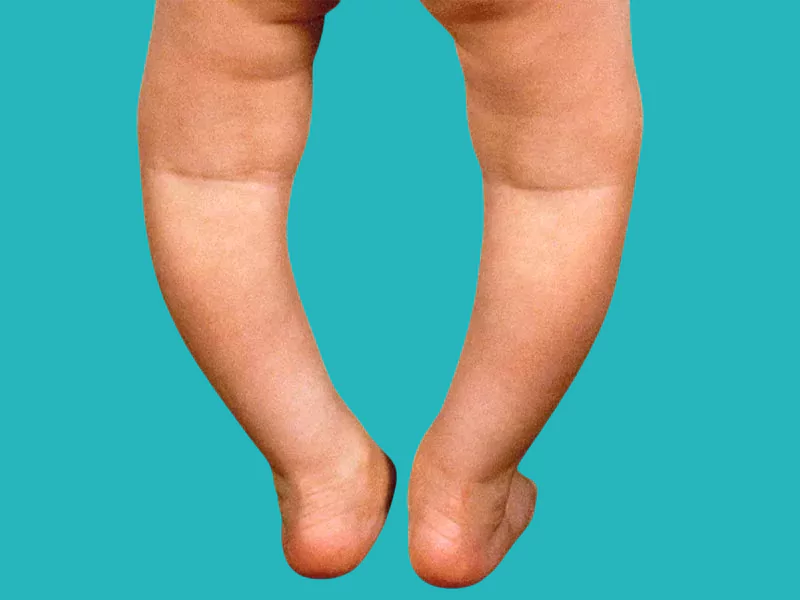Rickets and osteomalacia in children are among the most common growth disorders among children. They occur as a result of a deficiency in certain essential elements for building healthy bones, such as vitamin D and calcium.
Early detection and appropriate treatment help avoid complications and improve a child's health.
What is rickets and osteomalacia in children?
Before identifying the symptoms and treatment, it is important to first understand the nature of the disease. It is a disorder that affects bone formation and strength, resulting from a lack of bone mineralization or poor absorption of important nutrients.
This leads to osteoporosis and bone deformity, as in the following cases.
Causes of rickets and osteomalacia
There are many causes of rickets, the most prominent of which are:
- Vitamin D deficiency due to lack of exposure to sunlight.
- Deficiency of calcium or phosphorus in the diet.
- Digestive system diseases that impede vitamin absorption.
- Genetic factors that affect bone metabolism.
Symptoms of Rickets and Osteomalacia in Children

Symptoms of rickets appear gradually and may be noticed by parents over time. The most prominent signs indicating the condition include:
- Delayed sitting or walking.
- Bowed legs or bone deformities.
- Bone pain, particularly in the legs or back.
- Muscle weakness or delayed tooth eruption.
- Enlarged wrist or knee joints.
How to Diagnose Rickets
To confirm the diagnosis, the doctor relies on a series of steps, as follows:
- Clinical examination to identify bone deformities.
- Blood tests to assess vitamin D, calcium, and phosphorus levels.
- X-rays of the bones to determine the degree of softening or bowing.
Methods of Treating Rickets and Osteomalacia
Treatment for rickets depends on the underlying cause, and treatment methods vary from one child to another depending on the case. The most prominent of these are:
- Giving the child vitamin D and calcium supplements, as prescribed by the doctor.
- Following a balanced diet that includes dairy products, fish, and eggs.
- Exposing the child to sunlight in the early morning hours.
- In hereditary cases, special medications may be used under medical supervision.
Preventing Rickets and Osteomalacia in Children

To prevent this disease and ensure healthy bone growth, the following tips should be followed:
- Ensure a balanced diet rich in calcium and vitamin D.
- Consume vitamin D supplements for infants as directed by the doctor.
- Encourage your child to play outdoors with moderate sun exposure.
When should you see a doctor?
Some signs may appear that require immediate medical intervention, such as:
- Delayed growth or walking.
- Persistent bone pain.
- Noticing a pronounced bowing of the legs.
What is the difference between rickets and osteomalacia?
Some mothers may confuse the two conditions, so it is important to clarify the difference as follows:
- Rickets: Affects children during growth due to a deficiency in vitamin D or calcium, leading to bone deformities.
- Osteomalacia: It often occurs in adults after they have completed growth, as a result of poor bone mineralization, not bone deformity.
Can rickets be treated at home?
Home treatment is part of the recovery plan and not a substitute for medical advice. Home remedies include:
- Exposing your child to sunlight every day in the early morning.
- Providing meals rich in vitamin D and calcium, such as milk, eggs, and fish.
What foods are beneficial for treating rickets?
It is important to provide your child with foods rich in bone-strengthening nutrients, including:
- Milk and dairy products.
- Egg yolks.
- Oily fish, such as salmon and tuna.
- Liver.
- Cereals fortified with vitamin D.
Can rickets be prevented before it occurs?
Yes, and this can be achieved by following the following guidelines:
- Giving your infant vitamin D supplements from the first month after birth.
- Maintaining a balanced diet during pregnancy and breastfeeding.
- Moderately exposing your child to sunlight.
Can rickets affect infants?
Yes, rickets can occur in infants, especially if they don't get enough vitamin D. Therefore, it's recommended to give supplements from the first months of life.
Article Summary
Rickets and osteomalacia in children are treatable and preventable diseases when detected early. Therefore, always ensure your child has a healthy diet and adequate exposure to sunlight to ensure strong bones and healthy growth.